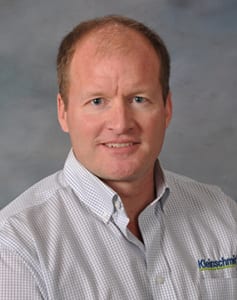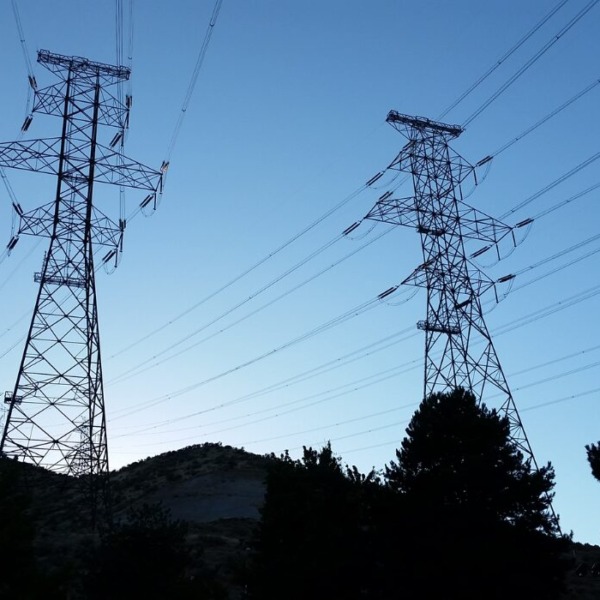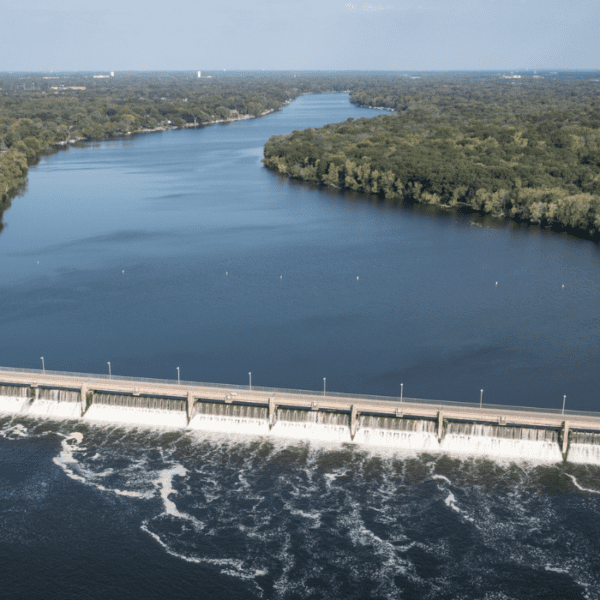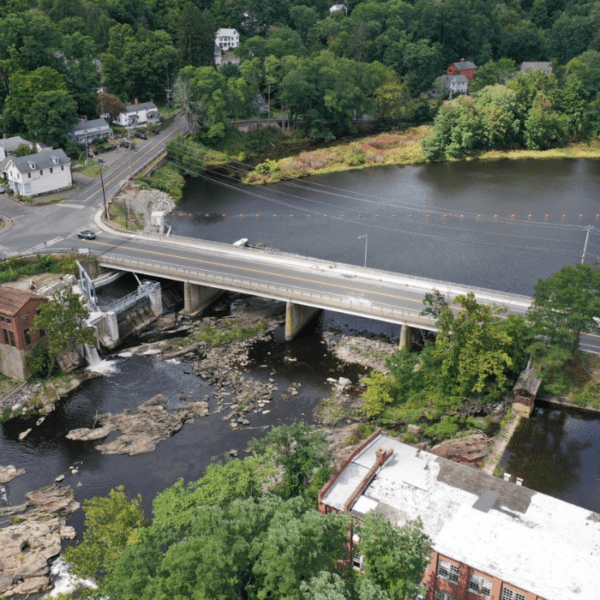The need for energy storage is growing in response to the continued development of renewable energy sources (e.g., wind and solar power). Although battery storage can provide energy on a small scale, the only large-scale proven technology for energy storage is pumped-storage hydropower.
Pumped-storage hydropower facilities are designed to cycle water between a lower and an upper reservoir. Pumped storage traditionally has been used to provide “peaking” power. Water is pumped to an upper reservoir (using surplus electricity on the system to run the pump) and then, when demand for electricity is high, the water is released back to the lower reservoir through reversible pump/generating units, thereby producing electricity for use in these high-demand periods. Pumped storage provides the opportunity to meet variable load demands; modern pumped storage provides peak and variable load regulation in both pumping and generating modes.
The current decarbonization plan for the electric grid in the United States is predicted to greatly increase the need for additional pumped-storage projects. With the Biden Administration making a clear push to bring more renewable energy on-line, this could be a favorable time to develop a pumped-storage facility.
Someone new to pumped storage may ask: Is there a clear process for pumped-storage development? The short answer is NO. Most pumped-storage projects in the United States were constructed over 50 years ago and, until recently, there were not many new projects being planned or proposed.
WHERE TO BEGIN?
Proper site selection is the most critical component of developing a successful pumped-storage project. A “closed-loop” project that cycles water back and forth between two man-made reservoirs has a much better chance of approval than a project that uses a natural waterbody (i.e., river or lake) for one or both of the reservoirs.
Initial feasibility screening of potential sites include land availability, topography, geology, proximity to water and/or transmission lines, ecologically sensitivity, endangered species, cultural resources, or other issues that may preclude development.
An initial evaluation of potential sites for the development of pumped-storage hydroelectric facilities should include an assessment of the region’s wholesale and retail power markets and, in particular, the projected need for new carbon-free sources of firm/flexible capacity.
Once a pumped-storage development site passes the initial screening selection, additional studies are required. These studies will provide a better understanding of potential costs and benefits with a more quantitative assessment of project feasibility and the information needed to support a preliminary permit application (this is the initial step in Federal Energy Regulatory Commission [FERC] licensing). This involves developing a conceptual layout of the project and estimates of construction and permitting costs.
The next stage includes outreach to agencies and stakeholders and development of a detailed feasibility study. The feasibility study would provide investor-grade information and details needed to support FERC licensing and other permitting needs.
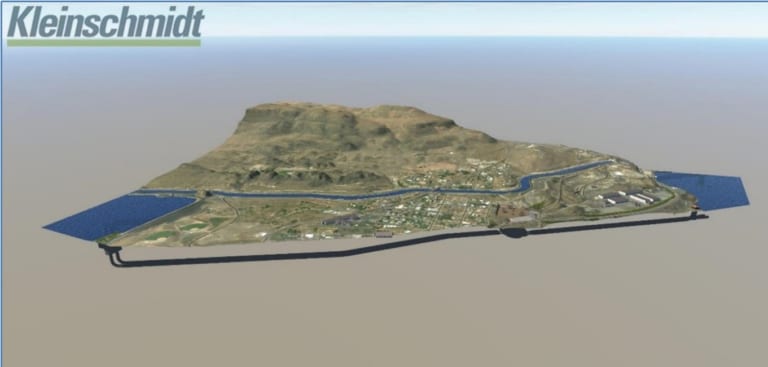
REGULATORY PROCESS
The uncertainty of the FERC licensing process is a major consideration in the development of a pumped-storage project in the United States. Obtaining a FERC license, for any new project, typically takes a minimum of 5 years and could take much longer depending on environmental issues and regulatory authorities involved.
The American Water Infrastructure Act of 2018 directed FERC to introduce an expedited 2-year process, which developers can now request. Besides being closed looped, sufficient existing information and a well-developed project proposal would be required. For developers considering the shorter process, consultation with FERC regarding this process and working with resource agencies to ensure their support for such an approach is suggested. Should FERC not approve a pilot or formal 2-year process, following the criteria and working closely with FERC should allow for a more streamlined and shortened licensing process.
The licensing process includes conducting more detailed investigations of potential environmental issues that could lead to modification of the conceptual design to avoid or minimize potential impacts. FERC would perform an Environmental Assessment or Environmental Impact Statement under the National Environmental Policy Act (NEPA). The recommendations from the NEPA process could further alter the design and/or the proposed mitigation and enhancement measures.
FINANCING
Financing pumped-storage projects in today’s deregulated power markets has proven to be a very difficult proposition as the cost of on- and off-peak power in a region’s wholesale power market is variable and difficult to predict.
Additionally, the value of services like firm capacity, spinning reserves, short-term balancing capacity, load regulation, black start, and other ancillary benefits are not recognized in many regional transmission organizations or are valued differently throughout North America. In particular, a project’s ability to demonstrate that it would have a reliable future revenue stream is a critical element for the project’s ability to obtain financing in the capital markets.
Entering into one or more long-term Power Purchase Agreements (PPA) with one or more credit-worthy counterparties in essential for the developer/owner. In general, PPAs are contracts that define the terms and conditions for the purchase and sale of wholesale power products. PPAs associated with pumped-storage hydroelectric plants are usually more complex than for other generating facilities due to several unique characteristics of pumped-storage hydroelectric technology.
In regions where the bulk power grid is operated by an Independent System Operator or a Regional Transmission Operator, financing a new pumped-storage hydroelectric facility may be difficult because some of the attributes provided by the project (e.g., including firm/flexible capacity and some ancillary services) may not be fully compensated.
In the end, the PPA is the principal agreement that defines the revenue and credit quality of a pumped-storage hydroelectric project and is thus a key instrument in acquiring financing for the facility.
AN EXPERIENCED CO-PILOT CAN HELP YOU COMPLETE YOUR JOURNEY
Kleinschmidt is one of only a few consulting firms in North America that has decades of experience focusing specifically on hydroelectric power projects. The firm’s extensive pumped-storage hydroelectric licensing and engineering experience comprises more than 30 pumped-storage facilities.
Specific projects include managing the relicensing of 11 pumped-storage projects, including 3 current projects; and engineering for more than 20 pumped-storage projects ranging from electrical controls, hydraulic and hydrologic, to operations optimization.
Kleinschmidt is currently developing conceptual layouts and construction cost opinions for two proposed pumped-storage generating facilities.
CONCLUSIONS
Pumped-storage hydropower is poised to play a vital role in the decarbonization of power grids throughout North America. It is a proven, long-term, renewable-energy-based battery capable of storing and generating large amounts of electricity and responding quickly to help grid operators maintain the reliability of the bulk power system
Pumped-storage projects paired with other renewable generating technologies (e.g., land-based and offshore wind, land-based and floating solar, hydro, wave, tidal) have the potential to provide firm, reliable power without reliance on fossil fuels. Well-sited projects will have minimal localized environmental impacts and have the potential to provide numerous habitat and recreational benefits.
Contact us at solutions@kleinschmidtgroup.com or visit us on the web at kleinschmidtgroup.com to learn more about how we can help you navigate the pumped-storage process.



